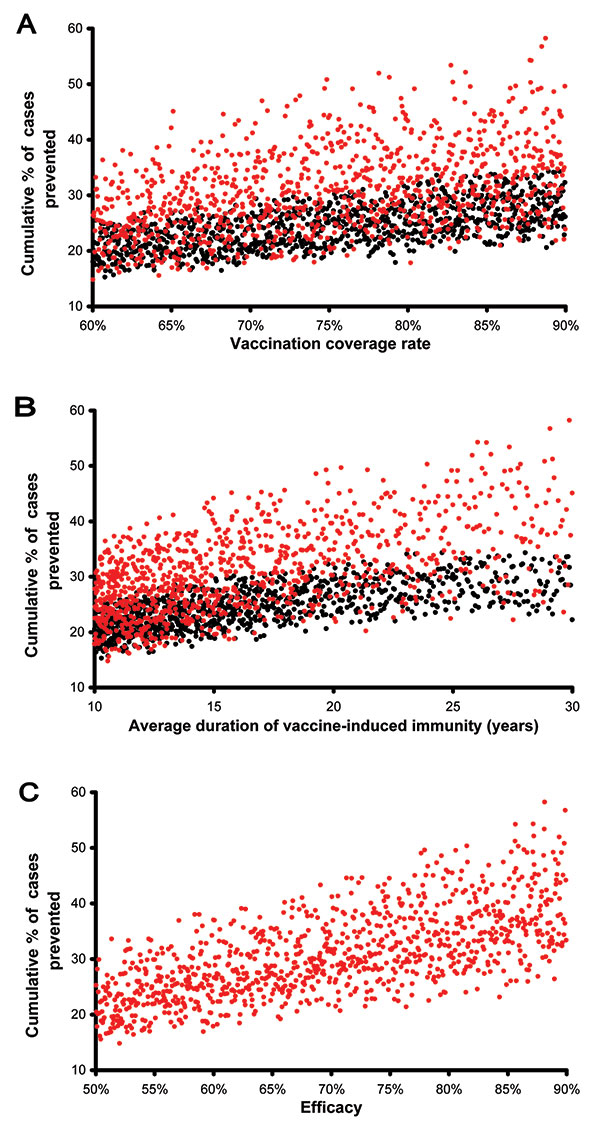Volume 10, Number 9—September 2004
Perspective
Potential Public Health Impact of New Tuberculosis Vaccines
Figure 4

Figure 4. Unadjusted predicted data are plotted; red points represent postexposure vaccines, black points represent preexposure vaccines. A) Cumulative percentage of tuberculosis (TB) cases prevented. B) Cumulative percentage of TB cases prevented. C) Cumulative percentage of TB cases prevented. Cases prevented after 20 years of vaccination are shown as a function of vaccination coverage rates, duration of vaccine-induced immunity, or vaccine efficacy.
Page created: March 25, 2011
Page updated: March 25, 2011
Page reviewed: March 25, 2011
The conclusions, findings, and opinions expressed by authors contributing to this journal do not necessarily reflect the official position of the U.S. Department of Health and Human Services, the Public Health Service, the Centers for Disease Control and Prevention, or the authors' affiliated institutions. Use of trade names is for identification only and does not imply endorsement by any of the groups named above.